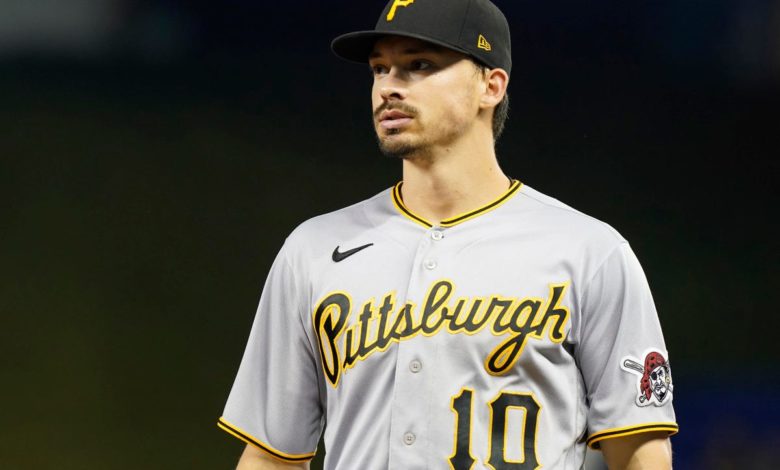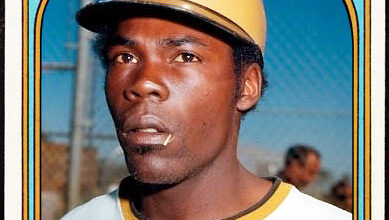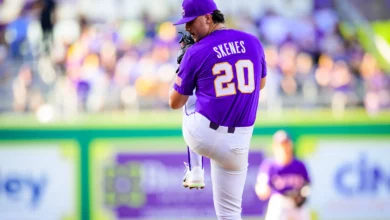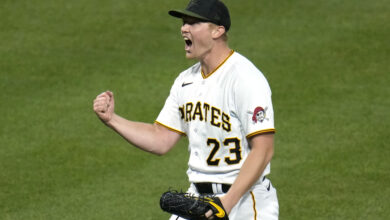
Now . . . nothing, apparently.
Close followers of baseball know by now the Pittsburgh Pirates’ best player, center fielder and 2021 All-Star Bryan Reynolds, has requested a trade. In response, the Pirates issued a statement, which began, “While it is disappointing, this will have zero impact on our decision-making this off-season or in the future.” If this is truly their stance, I say, good for the Pirates.
The Pirates don’t have to make a move to grant his request. Reynolds does not hit free agency until 2026 and is obligated to play for the Pirates until that time. But if he remains on the team in 2023, will his trade request become a distraction? Manager Derek Shelton addressed this issue at the recent winter meetings: “Our expectation is that Bryan Reynolds is gonna be who Bryan Reynolds is on the field. We’ve talked continuously about the way he plays the game and the effort he gives. In my conversations with him, I don’t think that’s going to change . . . He’s such a good human being that I don’t think any of this will affect our clubhouse at all.”
Possible reasons
As neither side has spoken publicly about the reasons for the request, we can only speculate. One possibility is that he’s tired of playing for a losing team. Pirates fans weighing in on social media and radio talk shows seem to feel this is the reason.
The more likely reason is the failure to reach an agreement on an extension that would keep Reynolds in Pittsburgh beyond 2025 and the increasing unlikelihood it’s going to happen. It’s been reported the Pirates have offered him the largest contract in Pirates history. The exact figure isn’t known. It’s certainly not Aaron Judge money but would have to exceed Ke’Bryan Hayes‘s current $76 million deal.
Off the hook?
Naturally, rival clubs have been all over this news like Dwight Schrute on a sales call. The Pirates would move Reynolds if bowled over by an offer, which was their stance before he asked to be traded. Several friends have suggested to me that Reynolds’s request may be a blessing in disguise. After all, the Pirates eventually trade all of their high salaried players anyway. This would get them off the hook with an increasingly disgruntled fan base tired of seeing their favorite players dealt away in the annual trade deadline exodus. Besides, a player of Reynolds’s stature (.281/.361/.481, 74 HR, 239 RBIs and 13.6 WAR over four seasons) will surely fetch a good return, right? Maybe a quality hitter and a top-of-the-rotation starting pitcher? Not so fast! Let’s examine this last point.
It’s hard to get equal talent in a trade for a star player. Contending teams don’t want to give up an important contributor from their major-league roster and are even reluctant to give away top prospects. I remember being 13 years old and seeing Gaylord Perry had been traded for Sam McDowell. As a 16-year-old, I saw Bobby Bonds had been traded for Bobby Murcer. I was wowed by these headlines, which made me impatient for the upcoming seasons. The days of such straight-up blockbuster deals are gone like Sunday doubleheaders and knothole gangs.
General manager Ben Cherington did a nice job accumulating prospects in this latest rebuilding effort but if Reynolds is to be traded, he’ll need to get more than prospects or right-handed relievers in return. How did some of his predecessors do when dangling the Pirates’ best player as trade bait? I can think of two players who were even more accomplished than Reynolds who the Pirates dealt away.
The Aramis Ramirez trade
In 2003, then-Pirates general manager David Littleyield — er, I mean, David Littlefield — had a pretty good bargaining chip in 25-year-old third baseman Aramis Ramirez, who in 2001 hit .300/.350/.536, 34 HR and 112 RBIs. Littlefield would trade him and Kenny Lofton to the Chicago Cubs. In return he got Matt Bruback, Jose Hernandez and Bobby Hill. Remember their contributions to the Pirates? Me neither.
Then again, it’s best just to skip over Littlefield’s tenure for purposes of what I’m attempting to illustrate. After all, this is a man who traded Chris Young, who went on to have a 13-year major-league career as a starting pitcher, for reliever Matt Herges before the 2003 season, only to cut Herges in the following spring training because he wasn’t left-handed. At the time, Littlefield said, “You don’t want to trade players and release the players you get back. It’s not [a move] I would recommend or, hopefully, do too often.” Yeah, no kidding.
The Jason Bay trade
So let’s move on to somebody who was better at the job. Neal Huntington was the next Pirates general manager after Littlefield’s 2007 dismissal. Huntington had a wide collection of trade chips, the best of which was Jason Bay, the 2004 National League Rookie of the Year and a two-time All-Star. Huntington managed to trade Bay to the Boston Red Sox for Manny Ramirez. Unfortunately, it was a three-team trade and Manny Ramirez wasn’t coming to Pittsburgh. He was going to the Los Angeles Dodgers.
The Pirates got Craig Hansen, Andy LaRoche, Bryan Morris and Brandon Moss. Only third baseman LaRoche was around for any appreciable period of time. Even so, he was clearly a place-holder until number-one draft pick Pedro Alvarez arrived on the scene. Huntington should always be fondly remembered by Pirates fans as the architect of the 2013-2015 playoff teams. However, by that time, all four of the players acquired for Bay were long gone.
If you ask me . . .
Thus, if it were me calling the shots, I’d keep Reynolds until his free agency rights vested. The Pirates say now is the time to concentrate on winning on the major-league level. If so, it’s not time to deal Reynolds. He may be unhappy about it, but he’s also looking for a big contract. Thus, he has to play hard and put up big numbers to get what he’s looking for. As for the effect on the Pirates’ clubhouse, my personal opinion is this notion is way overrated, with the caveat that I’ve never spent time in a major-league clubhouse, except for once when I took an off-season tour of PNC Park.
For any small market team (with the Tampa Bay Rays being a clear outlier here), success will be cyclical. Thanks to baseball’s ridiculous financial structure that allows for no revenue sharing, for success to happen, the Pirates — as well as the Cincinnati Reds, Cleveland Guardians, Detroit Tigers, Kansas City Royals and Oakland Athletics, to name a few — need to catch lightning in a bottle in the form of several players reaching their full potential and gelling as a team before their seven years of control are up, possibly being supplemented with a free agent or trade acquisition as necessary. Once success is achieved, the team’s core eventually becomes too expensive and the rebuilding process must start anew. Caving in to a four-year player who requests a trade makes that window of opportunity for success that much shorter. The Pirates should stick to their guns and keep Reynolds.




